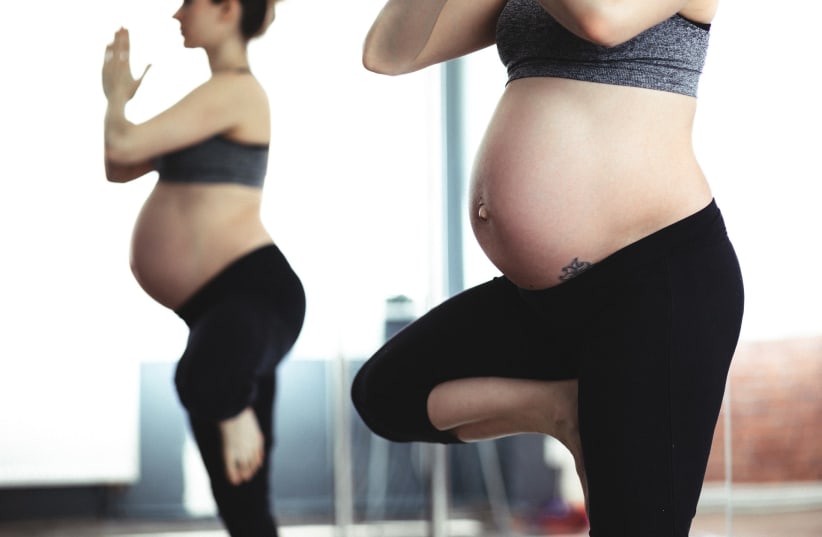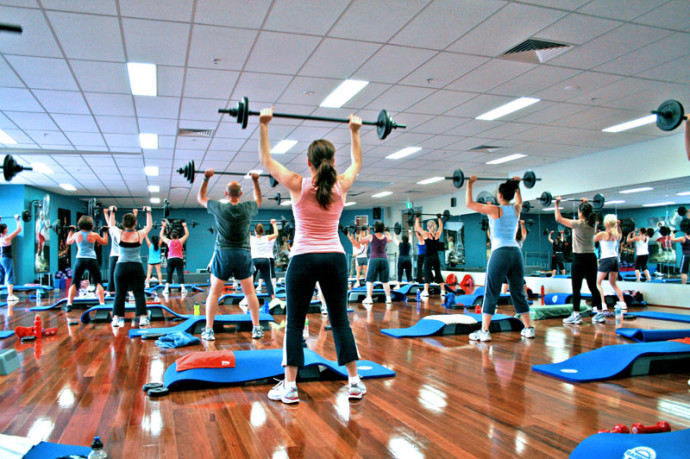Okay, so you’re expecting. You’re probably asking, should I go to the gym, or not? Well, as long as you feel well and the pregnancy is normal the answer is, of course, yes!
Why should you go to the gym? Good question. Working out will help you feel good about your body, helps prevent pain, strengthens muscles (which helps you carry the pregnancy better), inhibits the development of varicose veins and edema (water retention), improves blood circulation and lifts your mood.
However, it’s important that you adhere to some rules, and of course inform your fitness trainer about your pregnancy (even if you haven’t told anyone else yet), so that they can tailor the exercises to follow guidelines for pregnant women. What's more, in the case of a non-spontaneous pregnancy (fertility treatments), the coach must know, and your doctor must approve.
Noy Cohen, a fitness trainer and owner of Studio #Emunoyi, who specializes in training pregnant and postpartum women and runs the YouTube channel "Harunoy," stresses some of the rules for exercising during pregnancy that you must pay attention to.
Pulse
A pregnant woman’s pulse rate increases by 10 to 15 beats per minute. When training, be careful not to exceed 150 beats per minute. Your pulse affects the fetal pulse rate too, so a high pulse can cause fetal distress. How will you know that your heart rate is ok? Work out with a heart rate monitor, or try the "speech test" - if while exercising you can put together a complete sentence without panting too much, you’re maintaining a moderate pulse and that's great. But if you can’t say a sentence, your pulse might be too high and you should stop for a moment to rest. In addition, avoid performing jump exercises that raise the pulse and might loosen your pelvic floor.
Hypothermia
It’s important to avoid hyperthermia, which is when the body gets too hot. The temperature of a fetus is one degree higher than that of the mother’s. Fever above 39 degrees creates a risk of damage to the fetus' nervous system. So what do you do? Exercise in comfortable environmental conditions and not in the heat where you’ll sweat too much.
Forcefully Exhaling
Avoid the valsalva maneuver - stopping to breathe while exercising. It creates intra-abdominal pressure, causes the pulse to drop and blood pressure to rise. This may disrupt oxygen supply to the fetus. In short - breathe!
Laying on your back
There is a phenomenon called supine hypotensive syndrome. Your blood pressure can drop when you lay on your back, because a large stomach presses on the vena cava, a lower hollow vein located on the right side below the uterus. This vein is the main carrier of nutrition and fluids to the placenta and the fetus. Pressure on this vein may cause a decrease in the amount of blood returning to the heart, dizziness, nausea, pallor or redness and a decrease in blood flow to the placenta. It should be noted that studies haven’t found strong evidence for this syndrome, so the whole issue of lying on your back really depends on how you feel. If you’re comfortable, that’s fine. But if you’re dizzy or sick, avoid lying on your back or create a 45-degree lift on your back using a Pilates triangle, for example.
In the first trimester all forms of exercise are permitted. Starting with the second trimester, when the abdomen grows, it’s recommended to avoid exercises which target the abdominal muscles, in order to avoid bulging. Bulging is a small bulge in the abdomen that is created as a result of improper exercise. When you push back your shoulder blades and see a triangle in the abdomen, it means that instead of strengthening the abdomen and gathering it in, you’re pushing the muscle even further out which will weaken it. Therefore, the recommendation from the second trimester onwards is to avoid abdominal detachment exercises and focus more on planks, durability, etc., to properly hold in your stomach and avoid bulging.
Aside from these rules, it’s very important to be attentive to your body at all times and avoid anything unpleasant. In addition, be aware of the pelvic floor and be sure to contract it for 10 seconds and release it for 20 seconds. After the birth, visit a pelvic floor physiotherapist (it’s recommended to make an appointment in advance) and of course don’t rush yourself to return to exercise. Finish the postpartum period (6 weeks after vaginal birth and 8 weeks after cesarean) and return to training only after the doctor approves.

